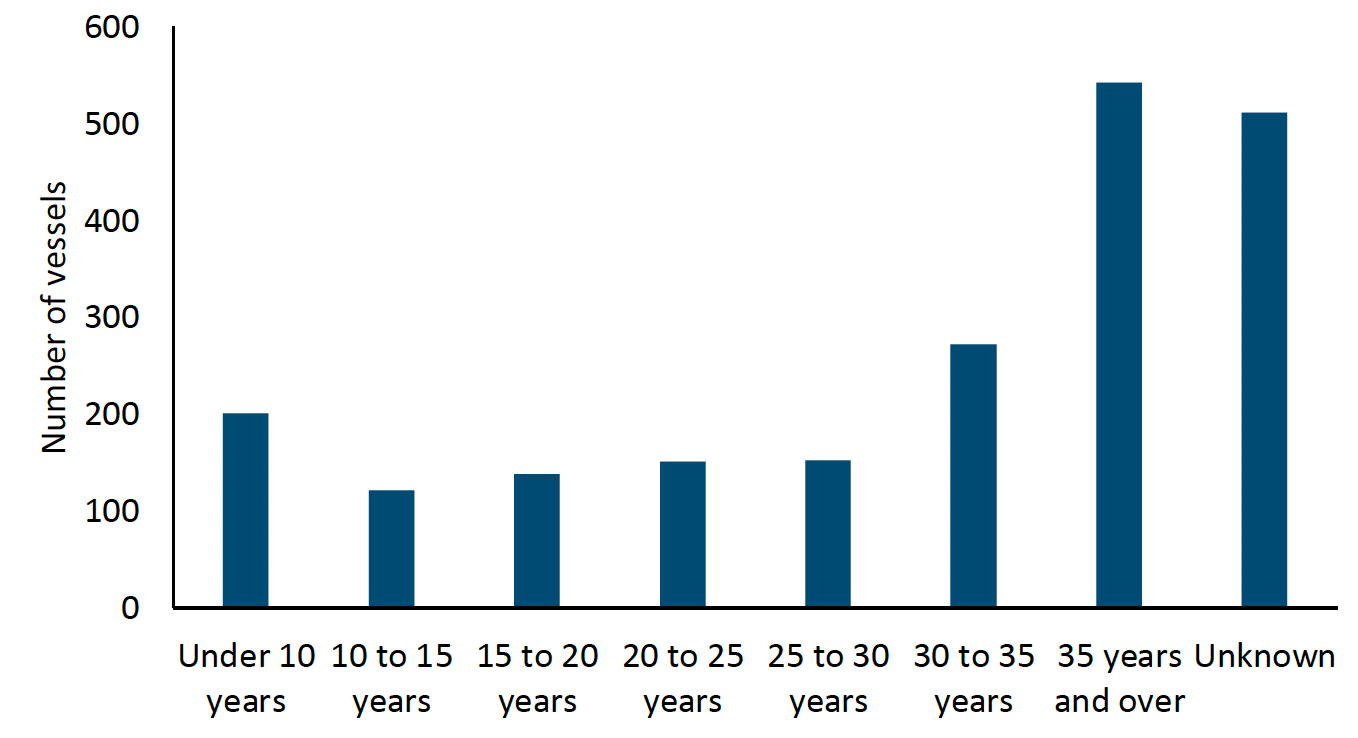Scottish Sea Fisheries Statistics 2020
National Statistics publication that provides data on the tonnage and value of all landings of sea fish and shellfish by Scottish vessels, all landings into Scotland, the rest of the UK and abroad, and the size and structure of the Scottish fishing fleet and employment on Scottish vessels.
4. The Scottish fishing fleet
4.1. Regulation of the UK fleet
UK fishing vessels are required by law to be registered with the Registry of Shipping and Seamen (RSS), part of the Maritime and Coastguard Agency. Fishing vessels must also have a licence that specifies conditions that must be adhered to. For the purpose of this publication, active vessels are those that are both registered and licensed as at 31st December of that year. Scottish-based vessels are those registered to a port in Scotland licensed and administered by a Scottish district. Each district (see map Annex 5) contains a Marine Scotland Fishery Office which is responsible for administering the vessels and licences within that area. UK fishing vessel licences authorise the sea areas in which a vessel can fish and the species of fish that can be caught.
The capacity of fishing vessels in terms of gross registered tonnage and kilowatt engine power is also controlled through licences. With a finite amount of licence capacity in existence and no plans to make new capacity available, this restricts the total number and capacity of vessels in the UK fishing fleet. In order to licence new vessels, fishers must acquire existing licences from other previously licensed vessels. They also have the option of aggregating or disaggregating licence components to fit the requirements of the vessel in question.
4.2. The Scottish fishing fleet
The number of active Scottish based vessels has decreased to 2,088 vessels in 2020, a reduction of 10 vessels since 2019 and a 0.3 per cent increase (7 vessels) since 2011 (Table 35a). The Scottish fleet is dominated by vessels that are ten metres and under in length with a total of 1,556 vessels falling into this category in 2020, accounting for 75 per cent of the Scottish fleet. 532 vessels are over ten metres in length.
The ten metre and under fleet mostly fish using creels (sometimes called pots), which are traps in the form of cages or baskets, typically baited and used to catch shellfish. Creels catch some shellfish species such as crabs, lobsters and Nephrops, but other species like scallops are predominantly caught through dredging and Nephrops is also caught through trawling. In 2020, 57 per cent (892 vessels) of the 1,556 ten metre and under vessels were fishing mainly using creels. There were 346 vessels in the 10 metre and under fleet which were non fishing[7] vessels in 2020.
Of the 532 over ten metre vessels, 71 per cent (379 vessels) mainly targeted shellfish, whilst 110 vessels (21 per cent) mainly targeted demersal species. Only 22 vessels mainly targeted pelagic species, 21 trawlers and one hand liner. Creel fishing vessels and Nephrops trawlers form the majority of the over ten metre shellfish group, whilst trawlers dominate the demersal group (Table 39).
Compared to 2011, the ten metre and under fleet has increased by 95 vessels (seven per cent) while the over ten metre fleet has decreased by 88 vessels (14 per cent).
Around one quarter of vessels (24 per cent, 511 vessels) in the Scottish fleet are of unknown age. Of those that are known, 460 (29 per cent) are under 20 years old, with an overall average age (of all known age vessels) of 29 years (Table 36a and Chart 6).

Table 37 shows the number of vessels in each of the eighteen administration districts in Scotland. Shetland is the district with the highest number of vessels with 232 vessels (11 per cent of the Scottish fleet). This was closely followed by Fraserburgh (228) and Stornoway (214) districts.
The majority (81 per cent) of the vessels in the Shetland district were in the ten metre and under category. This was similar in the Stornoway district where 82 per cent of its vessels were in the 10 metre and under category where as in the Fraserburgh district this was just over half at 56 per cent.
Lochinver is the only district to have more over ten metre vessels (59 per cent) than ten metre and under vessels. In the over ten metre fleet, there are more vessels targeting shellfish on the West coast than in the islands or East coast, whereas the majority of demersal and pelagic vessels are concentrated on the East coast (Table 39).
The total engine power of the Scottish fleet has remained broadly consistent at 376 thousand kW (up 11,243 kW, three per cent change since 2019). The total power of the over ten metre fleet increased by four percent to 287 thousand kW and the total power of the ten metre and under fleet remained very consistent at 89 thousand kW. The average power for the over ten metre fleet was 540 kW per vessel in 2020, whereas the ten metre and under vessels had an average power of 57 kW per vessel.
Compared to 2011, average power has increased by seven per cent in the ten metre and under fleet and increased by nine per cent in the over 10 metre fleet.
Contact
Email: fisheriesstatistics@gov.scot
There is a problem
Thanks for your feedback